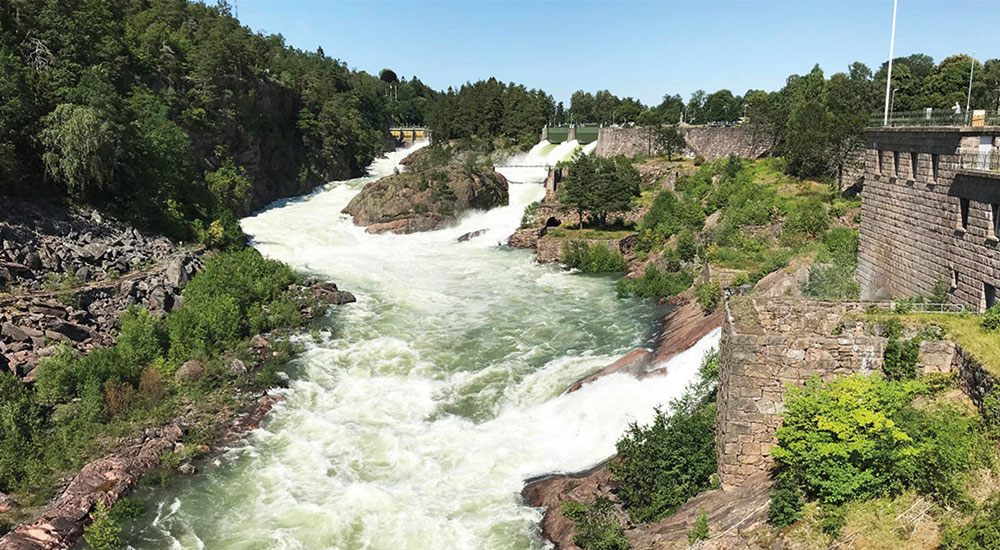
Trollhättan waterfalls no longer rage continuously like they did in the past, but you can still experience some of the wildness and romance that have attracted visitors to Trollhättan for centuries. You can see this spectacle from June to August. For the rest of the year the sluice gates are only opened for groups by special arrangement.
The mighty ravine landscape was created from cracks in the rock that opened up thousands of years ago. Gradually the river grew deeper due to rock falls and the constant abrasion of the mountain. The grandeur of this landscape is best seen from Oscarbsbron bridge, but you can also get fine views from many places along the nearby paths. The highest viewing point of all is at Kopparklinten, where on a clear day can see for tens of kilometres.
Over the centuries the powerful river current was used to drive mills. With growing industrialisation in the 18th and 19th the little town grew. Close to the existing sluice gates you can still see the ruins of some of the mills that stood here until the early 20th century.



